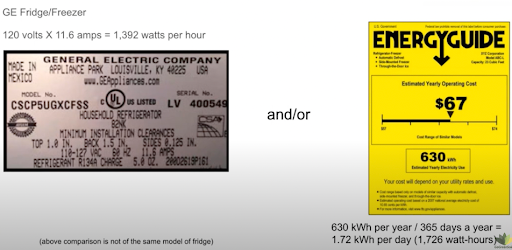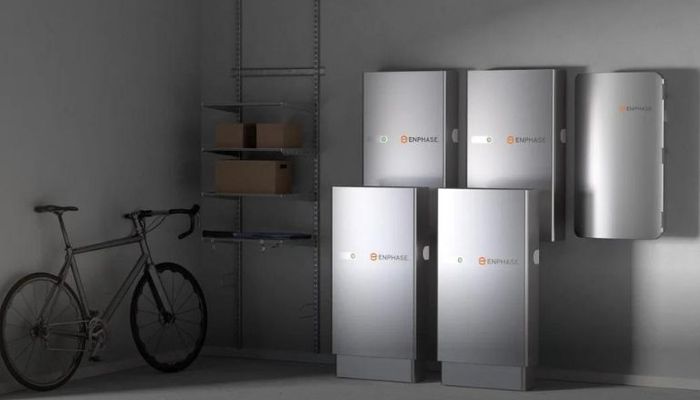How Many Solar Batteries Do I Need?

While installing solar panels can help you save money on your energy bills, adding batteries to the system can provide additional cost relief and backup power during outages, all while reducing your reliance on the grid.
You might be wondering: how many solar batteries do I need? Unfortunately, there is no straightforward answer to how many solar batteries you would need to power your home. However, this article will walk you through all the factors that play a significant role when deciding the right size and number.
Deciding factors
Here's what you need to consider to determine how many solar batteries you need:
- Your goals and needs
- Whether you have an existing solar system or are new to solar
- Battery chemistry
- Amp-hour
- Kilowatt-hour
Let's dive in.
What are your goals and needs with installing solar batteries?
According to Alex Lepore, a sales manager at Fortress Power, choosing solar batteries for your system is akin to shopping for home furnishings or a new car. "Just like how you pick out items for your home, like furniture or a car based on your needs, it’s the same with a solar battery. Do you need a large battery to fully back up your home or your business? Or are you working with a smaller budget and only need to power essential appliances if the grid goes down?"
To understand how many solar batteries you need, you need to:
- Know if you're installing an off-grid system or a grid-tie system
- Consider your lifestyle and the non-negotiables that need to stay on during outages
- Evaluate your home energy usage by reviewing your utility bills.
Say you're setting up an off-grid solar panel system. You'll need batteries to store energy for use at night when your panels aren't generating power — that's a must.
But if you're tied to the grid and just want to keep the lights on or refrigerator running if the power goes out, you don't necessarily need the biggest battery available.
Are you adding batteries to an existing solar system or installing new?
If you're already in the process of installing a solar panel system, it's recommended to install both the solar panels and batteries at the same time to save yourself some hassle down the line.
By doing so, you can obtain a single permit for both systems and have the installation crew handle everything in one go, making the process smoother and more convenient.
If you already have an existing solar panel system and want to add battery storage, it's not impossible. However, it's important to ensure that the battery bank is compatible with your existing solar setup.
What are the different battery chemistries?
While various battery technologies exist, lithium and lead-acid are considered the gold standard.
Lead-acid batteries were the go-to solution for many years. While less expensive than lithium batteries, lead-acid batteries do not have an integrated battery management system (BMS). They are significantly less efficient, heavier, larger, and more difficult to maintain than lithium batteries.
Lithium Ion batteries have more power density than lead-acid because they generate more power in a smaller footprint. In addition, lithium’s BMS offers a longer life expectancy, constantly monitoring battery temperature and voltage and discharging more stored energy. As a result, lithium batteries are pulling ahead of lead-acid batteries in popularity and grid-tie usage.
Lithium Pouch vs. Cylindrical vs. Prismatic – Not all lithium batteries are created equal. Lithium batteries set the standard for safety and are available in various forms: pouch cells, cylindrical cells and prismatic cells. Let’s do a quick comparison:

As you see, prismatic cells are the optimal option. Hence, Fortress Power and Enphase use prismatic cells, as they have the best durability, thermal stability and longevity of any lithium battery.
What the heck is an amp-hour?
Next to consider is amp-hour.
Amp-hour is the amount of amperage you can pull out of a battery in an hour. For solar storage applications, a 20-hour battery rate is the amount you should consider. Based on peak sun availability of three to six hours per day to charge your batteries, the remaining hours are spent discharging the batteries.
And what about kilowatt-hours?
A kilowatt is an amount of power that is being used at any given time. For comparison, 1,000 watts equals 1 kilowatt.
So a kilowatt-hour (kWh) is a measure of energy being used in an hour's time. For comparison, 1,000 watt-hours are equivalent to 1 kilowatt-hour.
How many kilowatt-hours are enough?
- Divide your monthly power bill by 30 days to get an idea of how much power you consume per day.
- Determine what appliances and electronics will run on battery power when the grid fails to get a daily estimate of kWh.
- Check the wattage on a load. Most larger appliances have an energy guide to tell you how much energy they consume. Here’s an example:

So, how many solar batteries do I need?
Now that you understand the factors that influence the amount of battery storage you need, it'll be easier to calculate this number for your own home.
Every home is different, and every homeowner’s needs differ. Check out the sample calculations below to understand what partial home backup vs. whole home backup looks like.
Partial home backup
Basically, “lights, outlets, fridge and freezer” are what you’re looking at powering with a partial home backup system. Here’s an example of the kilowatt-hours you’d need to plan for:
- Lights: 30 watts x 6 hours = 180 wh
- Outlets: 100 watts x 6 hours = 600 wh
- Fridge/freezer: 900 watts x 5 hours = 4,500 wh
So, you’d need 5,280 watt-hours OR 5.28 kilowatt-hours (kWh) daily.
The capacity of a single Fortress eFlex battery, for example, is 5.374 kWh. You can use 80% of that, so your usable power with the eFlex battery is 5.374 x 0.8 = 4.3 kWh. One battery would cover most of your needs (but not completely), so two batteries would be recommended.
Whole home backup
Full-home backup plans can get complicated quickly, depending on your needs. In addition to “lights, outlets, fridge and freezer,” heavy hitters like water heaters, dishwashers, and air conditioners require significantly more power to run, necessitating larger battery systems.
- Lights: 30 watts x 6 hours = 180 wh
- Outlets: 100 watts x 6 hours = 600 wh
- Fridge/freezer: 900 watts x 5 hours = 4,500 wh
- Electric hot water heater: 4,000 watts x 4 hours = 16,000 wh
- Dishwasher: 300 watts x 3 hours = 900 wh
- Air conditioner: 1,200 watts x 6 hours = 7,200 wh
So, you’d need about 31.1 kWh per day. Following our eFlex example above, you would need at least 7 eFlex batteries to cover your energy requirements (4.3 kWh usable power x 7 = 30.1 kWh).
Price comparison
Price differences between partial and whole-home backups can be significant:
- Single eFlex: $3,850
- Single eVault: $11,570
For partial home backup, you’d need two eFlex batteries for a total of $7,700. For whole home backup, you’d need seven eFlex batteries for a total of $26,950. Or, you could use two eVault batteries that cost $23,140 in total.
Leave it to the professionals to do the math
Determining the right size of a battery bank for your solar energy system can be a complex process, requiring a thorough assessment of your energy needs and usage patterns. That's why it's crucial to seek guidance from seasoned professionals with the necessary experience and expertise.
“Work with a trusted solar company that can help end users design a battery system based on exactly what they're looking for. That way, they can recommend the best products for the consumer’s needs," says Lepore.
Here at GoGreenSolar, our team of experts is dedicated to providing a comprehensive analysis of your unique situation to help determine the ideal amount of battery capacity that suits your needs. Get in touch with us today, and we’ll help you through every step of the process.






